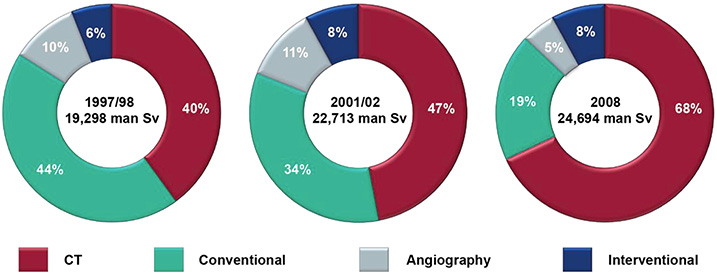Population Dose
People are exposed to radiation from lots of different sources. Many building materials contain low degrees of natural radioactivity and radon gas seeps from the ground into all buildings. The largest exposure is to naturally occurring radiation in homes and workplaces. There are also appreciable contributions from naturally occurring radioactivity in food and cosmic rays from outer space. You can see more of what contributes to people's exposure - Ionising Radiation and you.
The biggest contribution from man-made sources of radiation is from medical exposures. Radiation has long been used in medicine to produce images as an aid to diagnosis and it is these diagnostic dose data that are used in population dose studies. Radiation is also used to kill cells, such as cancers and to provide palliative treatment to patients by shrinking cancers, slowing down their growth and so relieving symptoms. Radiation doses can pose a health risk so every medical exposure must be carefully justified by a healthcare professional before it can be carried out.
UKHSA MDG periodically surveys medical use of diagnostic radiation in UK healthcare settings, the latest of which was carried out in 2008. These surveys look at the number of exposures carried out across the UK and the corresponding doses. Therapeutic uses of radiation are typically excluded. The surveys enable the different uses of radiation and the doses arising from them to be monitored over time across the UK, to identify trends, and allow any new sources of radiation exposure to be identified. The UK use of, and doses from, diagnostic imaging can also be compared to healthcare in other countries.
